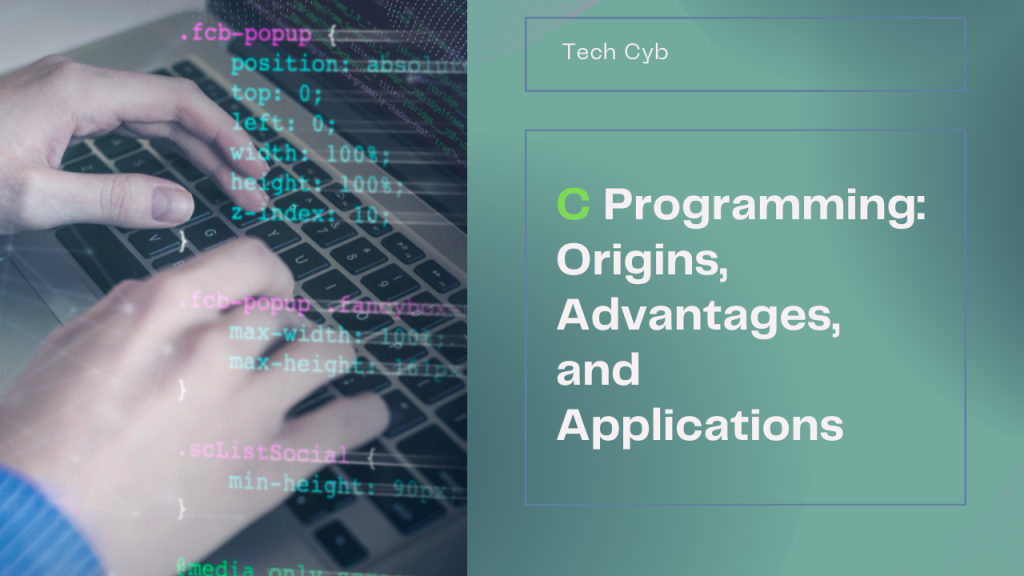C is a general−purpose, high−level language that was originally developed by Dennis M. Ritchie
to develop the UNIX operating system at Bell Labs. C was originally first implemented on the
DEC PDP-11 computer in 1972.
In 1978, Brian Kernighan and Dennis Ritchie produced the first publicly available description of
C, now known as the K&R standard.
The UNIX operating system, the C compiler, and essentially all UNIX application programs
have been written in C. C has now become a widely used professional language for various
reasons −
Easy to learn
Structured language
It produces efficient programs
It can handle low−level activities
It can be compiled on a variety of computer platforms
Facts about C
C was invented to write an operating system called UNIX. C is a successor of B language which was introduced around the early 1970s. The language was formalized in 1988 by the American National Standard Institute
(ANSI). The UNIX OS was totally written in C. Today C is the most widely used and popular System Programming Language. Most of the state-of-the-art software have been implemented using C. Today’s most popular Linux OS and RDBMS MySQL have been written in C.
Advantages of C Language
The following are the advantages of C language −
Efficiency and speed − C is known for being high−performing and efficient. It can let
you work with memory at a low level, as well as allow direct access to hardware, making
it ideal for applications requiring speed and economical resource use. Portable − C programs can be compiled and executed on different platforms with
minimal or no modifications. This portability is due to the fact that the language has been
standardized and compilers are available for use on various operating systems globally. Close to Hardware − C allows direct manipulation of hardware through the use
of pointers and low−level operations. This makes it suitable for system programming and
developing applications that require fine-grained control over hardware resources. Standard Libraries − For common tasks such as input/output
operations, string manipulation, and mathematical computations, C comes with a large
standard library which helps developers write code more efficiently by leveraging
pre−built functions.
Applications of C Language
The following are the applications of C language −
System Programming − C language is used to develop system software which are close
to hardware such as operating systems, firmware, language translators, etc. Embedded Systems − C language is used in embedded system programming for a wide
range of devices such as microcontrollers, industrial controllers, etc. Compiler and Interpreters − C language is very common to develop language
compilers and interpreters. Database Systems − Since C language is efficient and fast for low-level memory
manipulation. It is used for developing DBMS and RDBMS engines. Networking Software − C language is used to develop networking software such as
protocols, routers, and network utilities. Game Development − C language is widely used for developing games, gaming
applications, and game engines. Scientific and Mathematical Applications − C language is efficient in developing
applications where scientific computing is required. Applications such as simulations,
numerical analysis, and other scientific computations are usually developed in C
language. Text Editor and IDEs − C language is used for developing text editors and integrated
development environments such as Vim and Emacs.
C – Program Structure
A typical program in C language has certain mandatory sections and a few optional sections,
depending on the program’s logic, complexity, and readability. Normally a C program starts with
one or more preprocessor directives (#include statements) and must have a main() function that
serves as the entry point of the program. In addition, there may be global declarations
of variables and functions, macros, other user-defined functions, etc.
The Preprocessor Section
The C compiler comes with several library files, having “.h” as an extension. A “.h” file (called a
“header file”) consists of one or more predefined functions (also called “library functions”) to be
used in the C program.
The library functions must be loaded in any C program. The “#include” statement is used to
include a header file. It is a “preprocessor directive”.
To gain deeper insights into programming languages, including C, and explore what’s trending, check out our Top 5 In-Demand Programming Languages for 2024li. For more detailed resources on C programming, visit this guide to enhance your learning experience.
